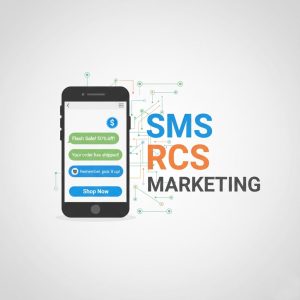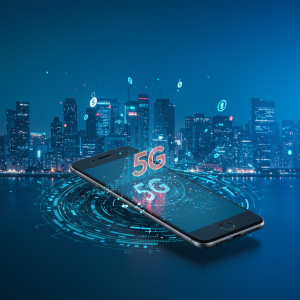Is SMS Marketing Effective?
The Rise of SMS Marketing in a Digital-First World
In today’s crowded digital landscape, marketers continually search for channels that cut through the noise. With email inboxes overflowing and social media feeds saturated, SMS marketing has emerged as a powerful alternative that delivers impressive results. But is SMS marketing truly effective, or is it just another passing trend?
This comprehensive guide examines the concrete effectiveness of SMS marketing in 2025, backed by recent statistics, real-world case studies, and expert insights. Whether you’re a small business owner or a marketing director at a large corporation, understanding the true potential of mobile marketing strategies could significantly impact your customer engagement and revenue growth.
SMS Marketing by the Numbers: Compelling Statistics
The effectiveness of any marketing channel can be objectively measured through data. When we examine the numbers surrounding SMS marketing, the results are striking:
- 98% open rate: Text messages are opened and read within minutes of receipt, compared to email’s average 20% open rate
- 45% response rate: SMS boasts response rates nearly 8 times higher than email marketing
- 90% of messages read within 3 minutes: Creating unprecedented immediacy in marketing communications
- Average ROI of 500%: When implemented correctly, SMS marketing delivers exceptional return on investment
- 19% click-through rate: Far exceeding the 2-3% CTR typical of email campaigns
According to a 2024 Gartner study on mobile engagement, SMS marketing remains one of the most direct and effective channels for reaching consumers, with 78% of consumers stating they are more likely to read a text message from a business than an email.
Why SMS Marketing Continues to Outperform Other Channels
Several unique factors contribute to the consistent effectiveness of SMS marketing:
1. Unmatched Visibility and Attention
Unlike emails that can be filtered into promotional folders or social media posts that disappear in crowded feeds, SMS messages appear directly on recipients’ lock screens. This prime visibility ensures your message receives immediate attention.
2. Personal and Direct Communication
Text messaging is inherently personal. When used appropriately, this creates a sense of intimacy and trust between brands and customers that’s difficult to establish through other marketing channels.
3. Concise and Focused Content
The character limitations of SMS force marketers to craft concise, value-driven messages. This brevity is increasingly appreciated by consumers suffering from content fatigue and information overload.
4. Timing and Immediacy
Few marketing channels can match the real-time nature of SMS. Time-sensitive promotions, flash sales, and urgent announcements can reach customers exactly when needed, driving immediate action.
5. Exceptional Reach and Accessibility
With over 6.8 billion smartphone users worldwide in 2025, SMS marketing provides unparalleled reach. Unlike app-based notifications or emails, SMS doesn’t require internet connectivity, making it accessible to virtually anyone with a mobile phone.
Real-World SMS Marketing Success Stories
Case Study 1: Retail Chain Increases Store Traffic by 21%
A national retail chain implemented a location-based SMS campaign targeting customers within a 5-mile radius of their stores. By sending personalized offers via text, they achieved:
- 21% increase in store visits
- 15% higher average transaction value
- 32% redemption rate on SMS-exclusive coupons
Case Study 2: Restaurant Group Boosts Reservations During Slow Periods
A restaurant group struggling with midweek occupancy rates developed an SMS campaign offering special prix fixe menus to previous customers. Results included:
- 28% increase in Tuesday and Wednesday bookings
- 47% of recipients making a reservation within 2 weeks
- 82% opt-in retention rate for future messages
Case Study 3: E-commerce Platform Recovers Abandoned Carts
An online retailer implemented an SMS cart abandonment strategy as part of their comprehensive mobile marketing approach. Their results showed:
- 23% cart recovery rate (compared to 8% with email alone)
- 17% higher average order value from SMS-recovered carts
- 3.5x ROI on their SMS marketing platform investment
Best Practices for Effective SMS Marketing in 2025
To achieve results similar to these success stories, follow these proven best practices:
1. Obtain Proper Consent and Maintain Compliance
Always secure explicit permission before sending marketing messages. According to Mobile Marketing Association guidelines, proper consent not only ensures legal compliance but also improves engagement by targeting genuinely interested customers.
2. Personalize Messages Based on Customer Data
Leverage customer data to personalize SMS content. Research by McKinsey shows personalized messaging can deliver 5-8 times the ROI on marketing spend compared to generic messaging.
3. Optimize Timing Based on Analytics
Analyze when your audience is most responsive and schedule messages accordingly. For retail customers, lunchtime and early evening typically show higher engagement rates.
4. Create Clear Calls-to-Action
Every marketing text should include a specific, compelling call-to-action. Whether it’s “Shop Now,” “Book Today,” or “Claim Offer,” give recipients clear direction on the next step.
5. Integrate SMS with Other Marketing Channels
For maximum effectiveness, integrate SMS with your broader marketing strategy. Create consistent messaging across email, social media, and SMS to reinforce your brand’s value proposition.
6. Measure and Analyze Performance Metrics
Regularly track key performance indicators such as:
- Delivery rates
- Open and click-through rates
- Conversion rates
- Opt-out rates
- ROI per campaign
Overcoming Common SMS Marketing Challenges
Despite its effectiveness, SMS marketing comes with potential challenges that must be addressed:
Challenge 1: Message Frequency and Timing
Solution: Implement preference centers that allow customers to select their desired frequency and timing of messages. Studies show that respecting these preferences can reduce opt-out rates by up to 40%.
Challenge 2: Character Limitations
Solution: Craft concise messages that deliver value immediately. For longer content, include shortened URLs linking to mobile-optimized landing pages.
Challenge 3: Building an Opt-In List
Solution: Leverage existing customer touchpoints to grow your SMS list. Website pop-ups, point-of-sale materials, social media, and email campaigns can all promote SMS subscription with clear value propositions.
Challenge 4: Measuring ROI Accurately
Solution: Implement unique tracking codes, dedicated landing pages, and integrated analytics to accurately attribute conversions to your SMS campaigns.
When SMS Marketing Works Best: Industry Applications
SMS marketing effectiveness varies across industries. Here’s where it typically delivers exceptional results:
Retail and E-commerce
- Flash sales announcements
- Exclusive offers and discounts
- Abandoned cart reminders
- Order status updates
Hospitality and Food Service
- Reservation confirmations and reminders
- Special event promotions
- Limited-time offers
- Loyalty program updates
Financial Services
- Transaction alerts
- Payment reminders
- Fraud prevention notifications
- Account updates
Healthcare
- Appointment reminders
- Medication adherence messages
- Health tips and education
- Prescription refill notifications
The Future of SMS Marketing: Emerging Trends
As we look ahead, several trends are shaping the future effectiveness of SMS marketing:
1. Rich Communication Services (RCS)
RCS represents the next evolution of SMS, offering enhanced features like rich media, interactive buttons, and verified sender profiles. As adoption grows, marketing effectiveness is expected to increase proportionally.
2. AI-Powered Personalization
Artificial intelligence is revolutionizing SMS marketing by enabling hyper-personalized messages based on real-time behavior, location, and preferences.
3. Conversational Commerce
Two-way SMS conversations that enable customers to ask questions, place orders, and receive support are becoming increasingly popular, with conversion rates up to 25% higher than traditional one-way campaigns.
4. Integration with Voice Technology
The growing integration between SMS marketing and voice assistants creates new opportunities for seamless customer experiences across devices and platforms.
Is SMS Marketing Worth Your Investment?
Depending on extensive data analysis and real world results, SMS marketing is one of the most effective channels available for abolition in 2025. With unmatched open prices, extraordinary ROI and direct access to customers’ most individual devices, some other channels may match SMS results.
The key to success lies in strategic implementation. By following best practices, respecting customer preferences and integrating SMS with your extensive marketing ecosystem, you can achieve impressive results regardless of your industry or business size.
For businesses seeking to enhance their customer engagement and drive measurable results, investing in professional mobile marketing services and building a strong SMS strategy should be considered essential rather than optional in today’s competitive landscape.
The evidence is clear: when executed correctly, SMS marketing isn’t just effective—it’s often the most direct path to capturing customer attention and driving action in an increasingly distracted world.
FAQs About SMS Marketing Effectiveness
Q: How much does SMS marketing typically cost? A: SMS marketing costs vary based on volume and service provider, but typically range from $0.01 to $0.05 per message. Most businesses see positive ROI with properly targeted campaigns.
Q: How often should I send marketing texts? A: Research suggests 2-4 texts per month is optimal for most businesses. However, this varies by industry and customer preferences.
Q: What’s a good conversion rate for SMS marketing? A: Average conversion rates range from 29-45% depending on the industry and offer type, significantly higher than email marketing’s typical 1-5%.
Q: Is SMS marketing more effective than email marketing? A: While both have their place, SMS consistently shows higher open rates (98% vs 20%) and faster response times (90% read within 3 minutes vs hours or days for email).
Q: How can I measure the effectiveness of my SMS campaigns? A: Track key metrics including delivery rates, open rates, click-through rates, conversion rates, opt-out rates, and overall ROI compared to other marketing channels.







